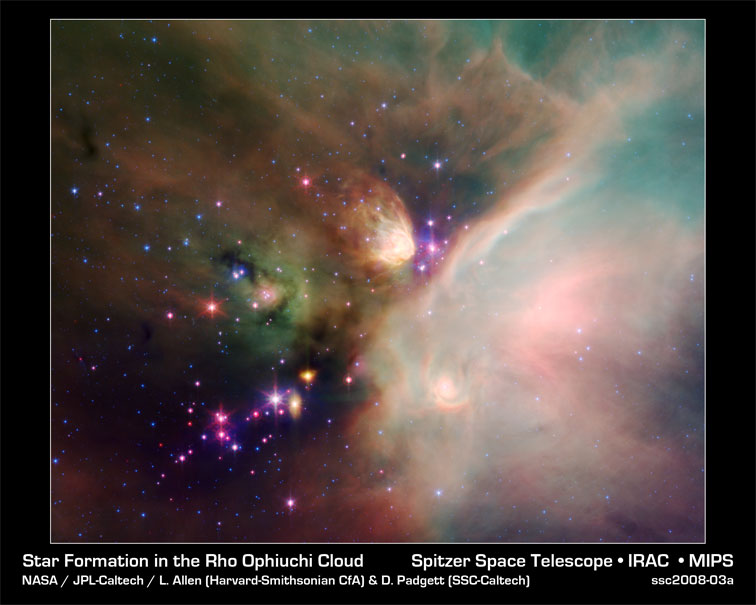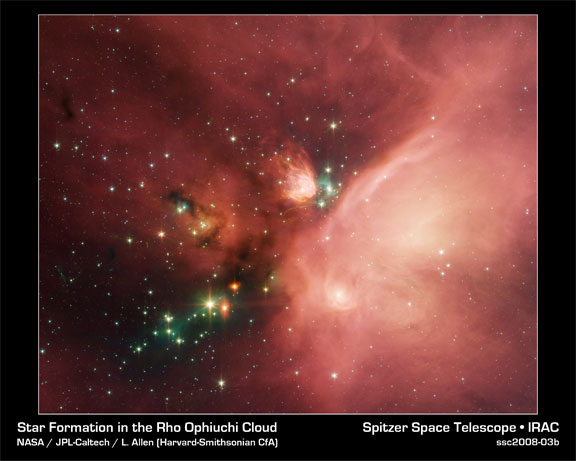Image List
-

Newborn stars peek out from the Rho Ophiuchi star-forming region in this dynamic image from NASA's Spitzer Space Telescope. This representative-color image of Rho Oph's main cloud, Lynds 1688, was created with data from Spitzer's infrared array camera, which has the highest spatial resolution of Spitzer's three imaging instruments, and its multiband imaging photometer, best for detecting cooler materials. Blue represents light with a wavelength of 3.6 microns; green shows light of 8 microns; and red is 24-micron light.The colors in this image reflect the relative temperatures and evolutionary states of the various stars. The youngest stars are surrounded by dusty disks of gas from which they, and their potential planetary systems, are forming. These young disk systems show up as red in this image. More evolved stars, which have shed their natal material, are blue. The extended white nebula in the center right of the image is a region of the cloud which is glowing in infrared light due to the heating of dust by bright young stars near the right edge of the cloud. Fainter multi-hued diffuse emission fills the image. The color of the nebulosity depends on the temperature, composition and size of the dust grains.
NASA/JPL-Caltech/Harvard-Smithsonian CfA -

Newborn stars peek out from the Rho Ophiuchi star-forming region in this dynamic image from NASA's Spitzer Space Telescope. This representative-color image of Rho Oph's main cloud, Lynds 1688, was created with data from Spitzer's infrared array camera, which has the highest spatial resolution of Spitzer's three imaging instruments. Blue represents light with a wavelength of 3.6 microns; green is 4.5 micron light; orange is 5.8; and red is 8.0. The colors in this image reflect the relative temperatures and evolutionary states of the various stars. The youngest stars are surrounded by dusty disks of gas from which they, and their potential planetary systems, are forming. These young disk systems show up as yellow-green tinted stars in this image. More evolved stars, which have shed their natal material, are blue-white. The extended white nebula in the center right of the image is a region of the cloud which is glowing in infrared light due to the illumination of dust by bright young stars near the right edge of the cloud. Red and pink diffuse emission from carbon-rich dust molecules fills the image. Most of the stars forming now are concentrated in a filament of cold, dense gas that shows up as a dark cloud in the lower center and left side of the image against the bright background of the warm dust. Although infrared radiation at 8 microns pierces through dust easily, this dark filament is incredibly opaque, appearing dark even at the longest wavelengths in the image.
NASA/JPL-Caltech/Harvard-Smithsonian CfA